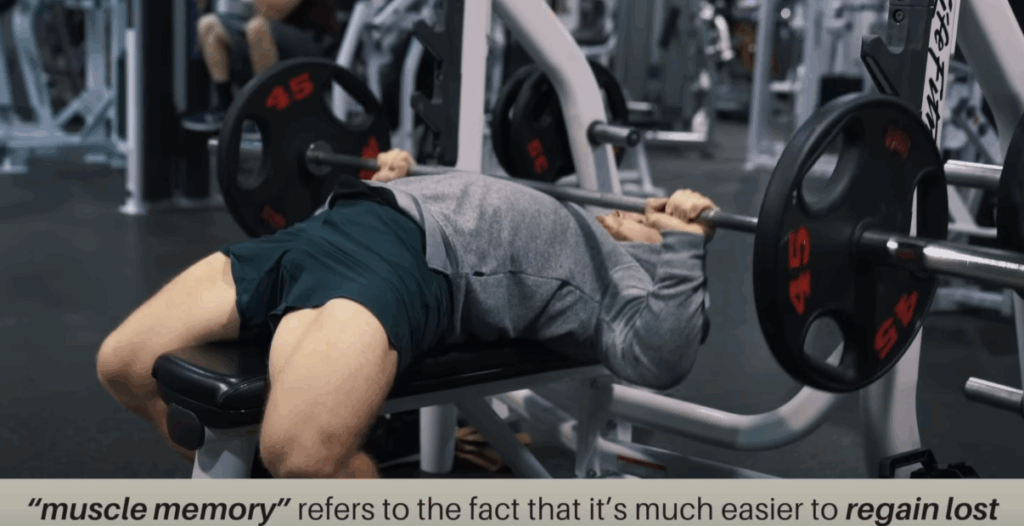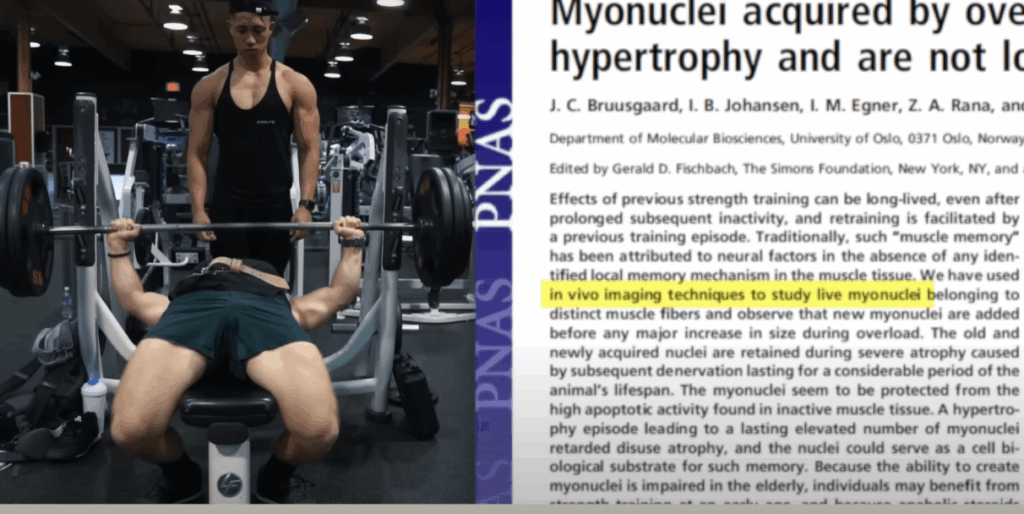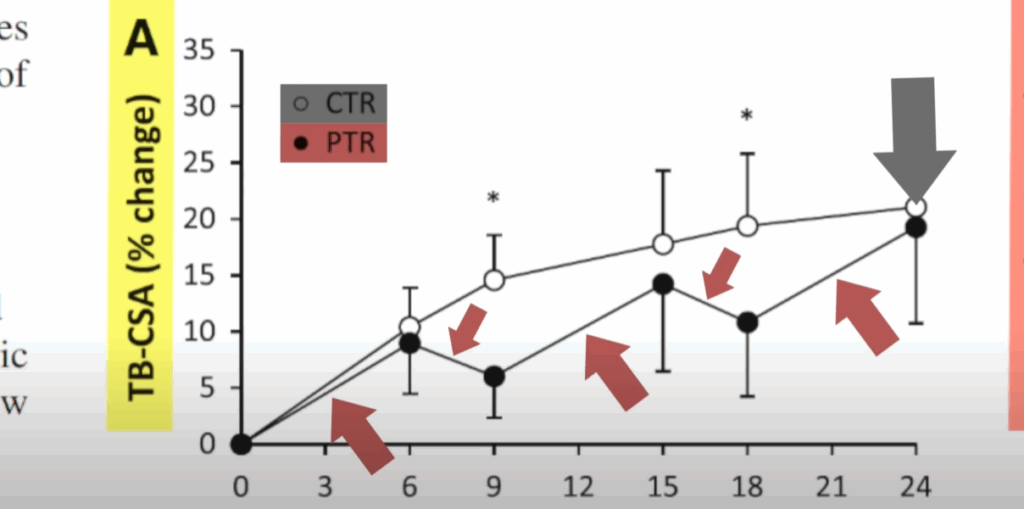There’s a common experience shared by almost everyone who’s trained seriously: you build muscle, take time off—maybe due to injury, vacation, or burnout—and lose some size. But when you return to training, your old strength and physique seem to come back much faster than the first time. That’s no coincidence. It’s a phenomenon known as muscle memory, and it’s one of the most fascinating—and hopeful—realities in muscle physiology.
In this article, we’ll explore what muscle memory really is, the science behind it, and how you can leverage it during training breaks or comebacks.
What Is Muscle Memory?
At its core, muscle memory refers to the body’s ability to regain previously built muscle mass and strength faster than it took to gain it originally. So, if you spent a few years building up a solid physique, and then took several months away from training, it won’t take you years to get that size back. In fact, many lifters see dramatic improvements in a matter of weeks after resuming their routine.
For years, the general assumption was that muscle memory was mostly neurological—linked to your nervous system “remembering” how to perform exercises efficiently. While that explanation accounts for improved coordination and technique retention, it doesn’t fully explain why actual muscle tissue returns more quickly.

Muscle Cells and the Role of Myonuclei
To understand the deeper mechanism, we need to explore the unique biology of muscle cells.
Unlike most cells in the body, muscle fibers contain multiple nuclei, known as myonuclei. These function like control hubs, directing the production of proteins that build and maintain muscle mass. When muscles grow due to resistance training, your body recruits satellite cells—specialized stem cells—to fuse with the muscle fibers and donate additional nuclei, expanding the fiber’s ability to synthesize new proteins and increase in size.
Here’s the kicker: when you stop training and your muscles atrophy, the size of the muscle shrinks—but those extra myonuclei do not disappear.
A groundbreaking study in 2010 out of the University of Oslo showed that muscle nuclei gained through training persist even after long periods of inactivity. This provides a distinct advantage when you return to lifting: your body doesn’t have to rebuild the nuclear infrastructure. The machinery is already in place, ready to restart protein synthesis at a much faster rate.
The Epigenetic Layer: Training Leaves a Mark on Your DNA
More recent research has added another layer to this concept—epigenetics, which refers to changes in gene expression without altering the underlying DNA sequence.
In a 2018 human trial, participants trained for seven weeks, detrained for seven, and then retrained for another seven weeks. Researchers found that certain epigenetic markers created by the initial training period remained intact during the break, essentially priming the muscle cells to respond more rapidly once training resumed.
What this means is that training doesn’t just improve your current state—it imprints long-lasting molecular adaptations into your muscle cells, enhancing your responsiveness to future workouts.

How Long Does Muscle Memory Last?
While it’s difficult to pinpoint exactly how long these changes persist, current research shows that both myonuclei retention and epigenetic modifications can last for months—and possibly years.
There’s anecdotal evidence of individuals who trained in their teens or twenties and, after long layoffs, were able to regain much of their former physique in their 40s or even 50s. The exact timeline likely varies from person to person, but the underlying biology is promising.
The Practical Implications of Muscle Memory
So what does all of this mean for your own training?
1. Taking a Break Doesn’t Equal Starting Over
Life happens. Injuries, vacations, stressful periods—they can all interfere with training. The good news? Thanks to muscle memory, you’re not starting from scratch after a layoff. Your previous gains are “saved” in a sense, and your body will bounce back faster than you think.
A 2012 study found that lifters who took breaks during a 24-week program achieved the same overall muscle growth as those who trained continuously. This suggests that planned rest or necessary time off may not sabotage your progress in the long run.
2. Recovery Should Be a Priority During Injury
If you’re hurt, it’s tempting to push through the pain—but rest and proper rehab may be the better long-term strategy. Since muscle memory can help you regain size and strength later, healing completely now means you’ll return stronger and safer.
3. Don’t Overhype the First Program After a Comeback
It’s easy to get excited about a new program, especially when you see rapid results after a layoff. But remember—those initial gains are often due to muscle memory, not necessarily the superiority of the workout itself. Be cautious when comparing programs or switching styles too quickly after a break.

Training After Time Off: How to Return Smart
If you’re coming back to the gym after time off, here are a few tips to make the most of muscle memory while staying injury-free:
- Ease back into volume and intensity. Your muscles may remember, but tendons and joints need time to readapt.
- Focus on compound lifts that stimulate large muscle groups and reawaken motor patterns.
- Stick to familiar exercises at first before experimenting with new movements.
- Prioritize sleep, hydration, and protein intake—essentials for recovery and hypertrophy.
- Be patient with strength gains. Your body composition may return faster than your maximal strength.
Muscle Memory in Context
While muscle memory is real and scientifically supported, it’s not magic. You still need to train, eat, and recover properly to rebuild lost mass. But it does give you a significant edge—and a reason not to panic if you’re forced to take time off.
Whether you’re returning after an injury, a vacation, or years away from the gym, rest assured: your body hasn’t forgotten how to be strong.
Final Thoughts
Muscle memory is one of the most encouraging findings in exercise science. Not only does it give you a biological safety net for periods of downtime, but it also reinforces the idea that your efforts in the gym never truly go to waste. Once you’ve built muscle, you’ve laid the foundation—structurally and genetically—for easier progress in the future.
So if you’re struggling with a layoff, injury, or break in consistency, just remember: those gains are waiting for you. When you’re ready, your body will remember.



